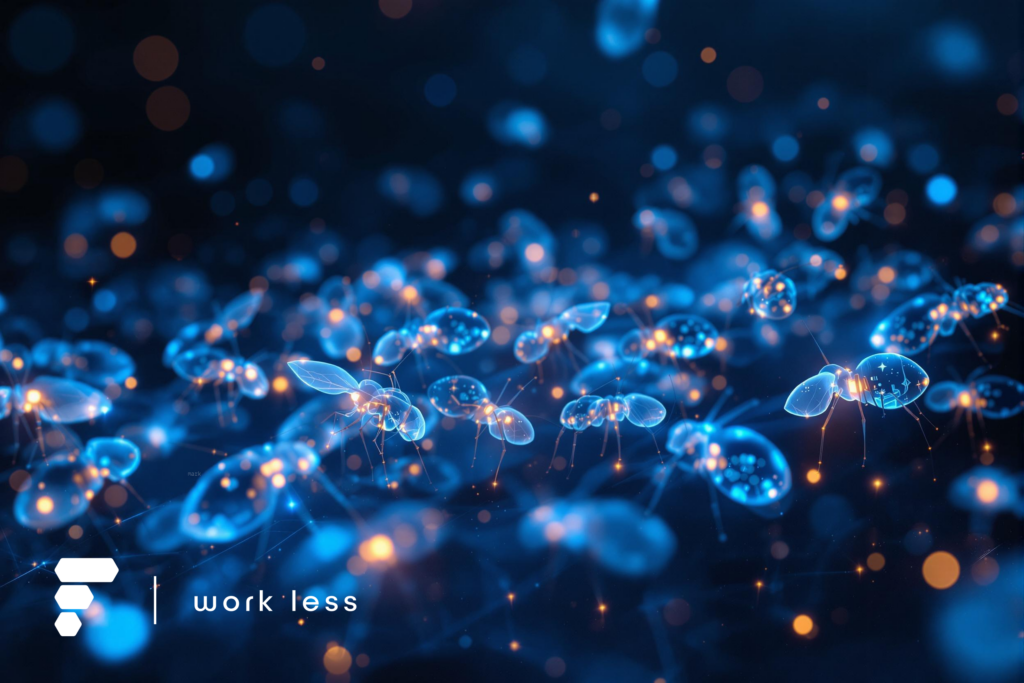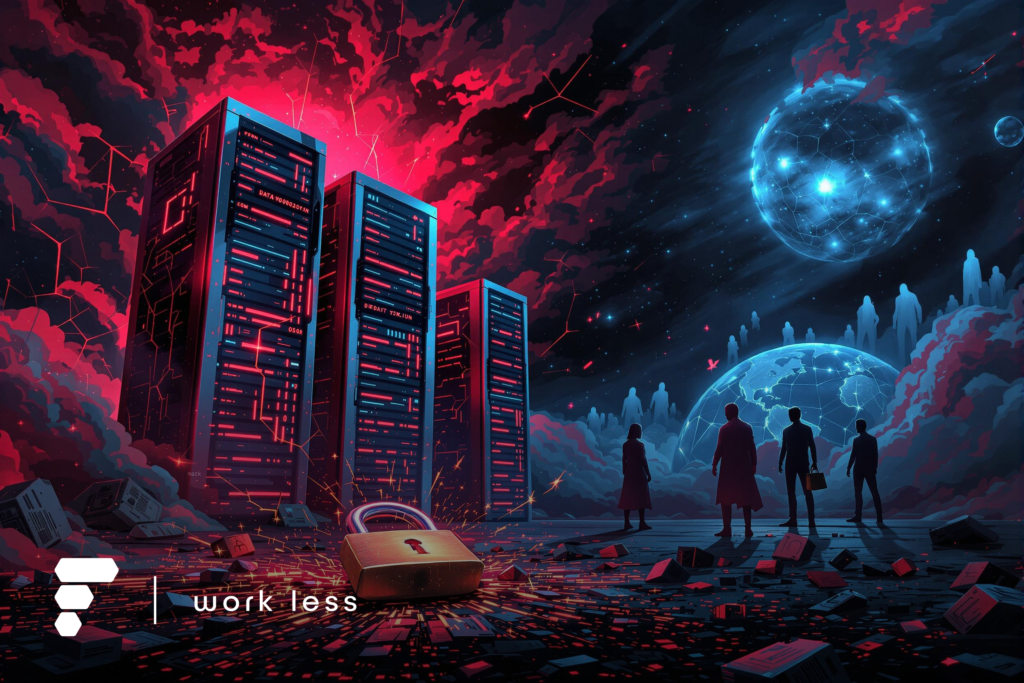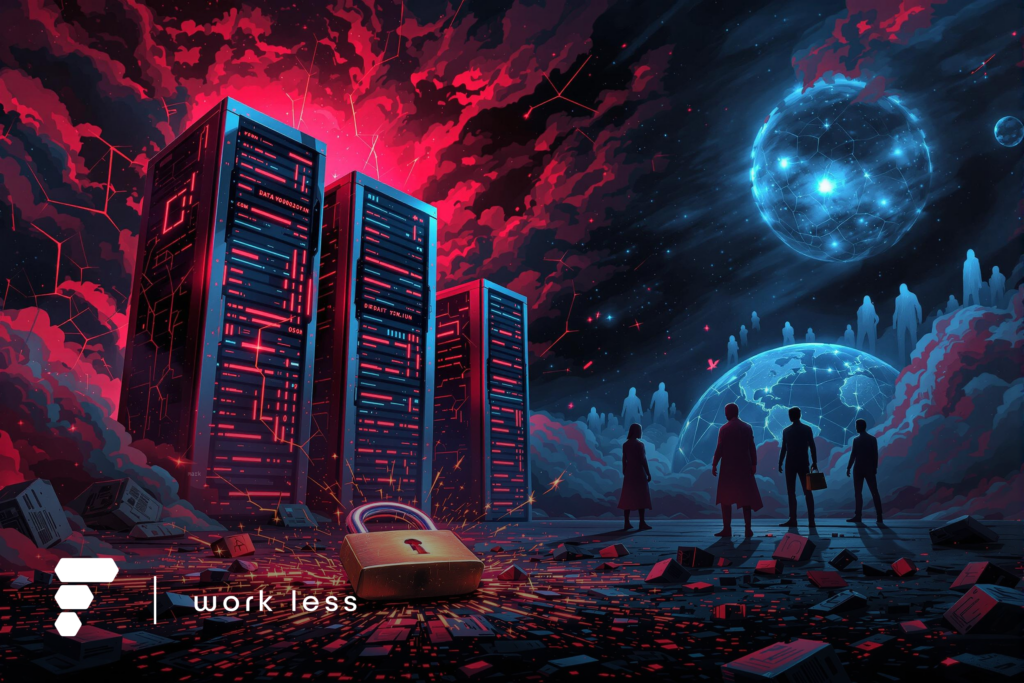Autonomous AI agents are revolutionizing sectors across a wide range of industries, from cognitive-focused fields like finance and cybersecurity to physically intensive domains such as manufacturing and transportation. These systems are designed to gather data, achieve specific objectives, and adapt dynamically through advanced algorithms. Their most defining trait lies in their ability to continuously learn and improve without human intervention, enabling transformative impacts across applications.
What Are AI Agents?
AI agents are autonomous software systems designed to perform tasks, solve problems, and achieve goals independently within specific parameters. Unlike traditional software, AI agents operate with a degree of independence, leveraging machine learning and advanced algorithms to adapt and optimize their actions over time. They are capable of managing complex systems, identifying patterns in large datasets, and automating repetitive tasks, acting as “digital workers” with high efficiency and accuracy.
“AI agents are like tireless digital workers, capable of thinking and acting autonomously to achieve specific goals. APIs serve as the universal language, allowing these AI agents to communicate with the vast ecosystem of software, data and services powering modern business. Together, they’re rewriting the rules of the game.”
Forbes
AI agents function by perceiving their environment, processing information, and taking actions to achieve their objectives. They range from simple rule-based systems to sophisticated programs that learn and adapt over time, making them indispensable in industries seeking automation and efficiency.
Key Characteristics of AI Agents
AI agents are defined by several core characteristics that enable their functionality:
Autonomy: Operate without human intervention, making independent decisions.
Perception: Gather data from their environment through sensors or data inputs.
Action: Execute tasks to influence their environment or meet objectives.
Learning: Improve performance based on past experiences or new information.
Examples of AI Agents
AI agents are ubiquitous across modern industries, with examples including:
Virtual Assistants: Tools like Siri or Alexa use natural language processing to assist users in daily tasks.
Autonomous Vehicles: Self-driving cars navigate roads and make real-time decisions.
Recommendation Systems: Algorithms suggest products, services, or content based on user behaviour.
According to IBM, an AI agent is a software program that autonomously performs tasks on behalf of a user or system, leveraging available tools and workflows. For example, a simple reflex agent operates based on predefined rules and immediate data, responding to specific conditions without memory or learning. While basic, such agents can be highly effective in straightforward applications.
The Collaborative Potential of AI Agents
The real potential of AI agents becomes evident when they collaborate. Individually, these agents deliver significant value; collectively, they transcend their singular capabilities and enter the domain of swarm intelligence. By working together, AI agents can communicate, share information, and solve problems cooperatively. This decentralized approach enables them to achieve complex, large-scale goals that would be impossible for individual agents alone.
What Is Swarm Intelligence in AI?
Swarm intelligence is a concept inspired by the collective behaviours of social insects like bees or termites. These organisms achieve complex tasks—such as locating resources or building intricate structures—through decentralized decision-making and simple local interactions. In the context of AI, swarm intelligence involves networks of autonomous agents working collaboratively to achieve shared goals. These agents communicate, share information, and make real-time collective decisions without relying on a central authority.
This decentralized structure provides several critical advantages:
- Scalability to handle expansive systems, such as fleets of drones or autonomous vehicle networks.
- Adaptability to dynamically respond to changing conditions and challenges.
- Resilience to maintain functionality even if some agents fail or encounter obstacles.
By leveraging the principles of nature, swarm intelligence equips AI systems with the tools to solve problems far beyond the capabilities of individual agents.
Key Principles of Swarm Intelligence
Effective implementation of swarm intelligence relies on several foundational principles. Drawing from both AI research and biological systems, these principles enable autonomous agents to function cohesively and efficiently, even in highly dynamic or unpredictable environments:
Awareness: Agents must have the ability to perceive and understand their environment.
Autonomy: Each agent should operate independently while contributing to the swarm’s collective objectives.
Solidarity: A unified purpose guides the swarm’s coordinated actions.
Expandability: The system must scale to include new agents or accommodate evolving tasks.
Resilience: The swarm must continue to function effectively despite disruptions or the failure of individual agents.
Alfonso Íñiguez elaborates on these principles, highlighting their importance for enabling effective collaboration among agents in a swarm. In his article, “Five Principles of Swarm Intelligence”, he explores how awareness, autonomy, solidarity, expandability, and resiliency drive the efficiency and adaptability of decentralized AI systems.
Adding to this transformative potential is the concept of infinite context windows in artificial intelligence, as highlighted by former Google CEO Eric Schmidt. Infinite context windows enable AI models to process vast amounts of information within a single session, unlocking deep, multi-step reasoning capabilities. Schmidt envisions this advancement as pivotal for breakthroughs in fields such as material science, climate research, and pharmaceuticals, where extensive context and sustained problem-solving are essential. By extending the scope of what AI can hold and analyze simultaneously, infinite context windows enhance the ability of swarms to develop comprehensive solutions for complex, long-term challenges.
Applications of Autonomous AI Agents in Swarms
When deployed in coordinated swarms, autonomous agents unlock powerful capabilities by dividing complex problems into specialized tasks. In the context of knowledge work for independent professionals, such as freelance consultants managing complex client projects, these agents can play distinct and complementary roles:
Market Analysis: One agent might analyze market trends, generating detailed reports on industry benchmarks and identifying emerging opportunities relevant to the client’s business.
Task Management: Another agent could review emails, project management tools, and shared documents to identify key deliverables, deadlines, and stakeholder priorities.
Content Creation: A third agent might synthesize findings, producing a draft proposal or presentation aligned with the client’s objectives and goals.
These agents share insights using structured data formats, such as JSON or Markdown, consolidating their outputs into a unified knowledge base. This collaborative system streamlines workflows, reducing the time spent on research, organization, and content creation.
Integrating the outputs from these agents into a comprehensive AI framework further enhances decision-making and client interactions. Tools like LangChain can organize agent outputs into vector databases, making the data accessible to advanced generative AI models, such as OpenAI’s LLMs. With carefully designed prompting strategies, these models can craft polished client deliverables, propose actionable recommendations, or generate compelling visual aids tailored to client needs.
This collaborative approach not only improves efficiency but also empowers independent professionals to deliver high-quality, data-driven results. It enables solo practitioners to operate with the precision and expertise typically associated with larger teams, providing a competitive edge in offering sophisticated, professional-grade services.
The Future of Swarm Intelligence
As swarm intelligence continues to evolve, its ability to address increasingly complex challenges will grow. Experts envision the potential for these systems to achieve artificial superintelligence, where agents outperform humans in virtually all dimensions of cognitive ability.
The principles of decentralized collaboration, self-organization, and scalability make swarm intelligence uniquely suited for high-stakes applications, such as managing autonomous transportation networks, coordinating disaster response, or overseeing large-scale industrial operations. By distributing decision-making across a swarm of agents, these systems offer unprecedented flexibility and robustness, enabling them to reshape industries and drive innovation at scale.
Conclusion
The rise of autonomous AI agents and swarm intelligence signals a transformative shift for modern knowledge workers and solopreneurs. By replicating the collaborative dynamics observed in nature, these technologies empower independent professionals with unprecedented adaptability, efficiency, and scalability. Autonomous agents, working in coordinated swarms, unlock the potential to manage complex workflows, synthesize data-driven insights, and deliver polished outputs—all without the need for large teams or extensive resources.
As these systems evolve, their impact will extend far beyond today’s applications, offering solopreneurs tools to tackle challenges once deemed insurmountable. This era of swarm-based AI redefines the way independent professionals operate, enabling them to compete at levels previously reserved for enterprises. With the ability to autonomously collaborate, adapt, and continuously improve, AI swarms are not just enhancing productivity—they are shaping the future of work, innovation, and professional independence.
Source: Forbes



